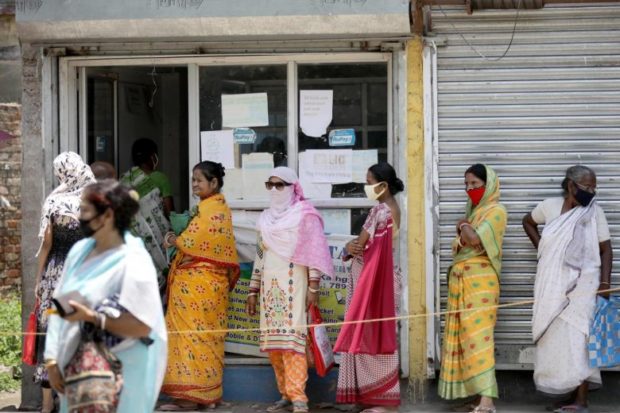
The credit line is part of a 20 trillion rupee (S$378 billion) fiscal and monetary package to support the Indian economy. PHOTO: EPA-EFE via The Straits Times/Asia News Network
NEW DELHI — India has announced a 20 trillion rupee (US $265 billion) economic package, which includes three trillion rupees worth of collateral-free loans for small businesses, as part of an effort to help the country navigate its way out of the economic distress caused by the Covid-19 pandemic.
It would also provide liquidity and empower entrepreneurs, tweeted Prime Minister Narendra Modi, who announced the package in an address to the nation on Tuesday (May 12).
India is coming out of a weeks-long, stringent lockdown to curb the spread of the coronavirus.
The lockdown had completely shut down economic activity, which is slowly resuming as the government scales back restrictions.
Industries can start again and shops can reopen, but with social distancing measures in place.
Mr Modi also said the lockdown would continue with new conditions beyond May 17, as the country registered more than 74,000 coronavirus cases.
On Wednesday, Finance Minister Nirmala Sitharaman gave details of the package, which amounts to 10 per cent of gross domestic product (GDP) and is among the larger stimulus packages announced in the world. It includes earlier measures totalling 6.5 trillion rupees, including 1.7 trillion rupees for the poor and the Reserve Bank of India liquidity measures.
“Essentially, this is to spur growth and to build a very self-reliant India,” said Ms Sitharaman, who will give more details of the package in tranches in the next few days.
She unveiled measures for micro, small and medium-sized enterprises (MSMEs), and they range from collateral-free loans to incentives for growth and to infuse immediate liquidity.
Also, MSMEs were promised that they will receive in the next 45 days all the pending payments due to them from the federal government.
“The intention is also to take local brands and build them to global level. It’s not about looking inwards and making India isolationist.
“It certainly talks about a confident India which can rest on its strengths and also be able to contribute to the globe,” she said.
India, like other countries around the world, is paying an economic price for the lockdown.
Economic growth was already slowing, reaching a six-year low of 4.7 per cent in the final quarter of last year, before the pandemic.
The lockdown is expected to severely dent its GDP growth, making this an even worse year than the 2008 global financial crisis.
The boost for smaller enterprises is seen as key to bolstering growth as MSMEs dominate the manufacturing sector and are the key drivers of its growth. The sector, which employs more than 100 million workers, is being threatened by a growing number of business closures.
In his address, Mr Modi also laid out a vision of self-reliance even as many countries strive to reduce their reliance on China amid supply chain disruptions.
Indian firms are already looking at reducing dependence on China.
Meanwhile, to boost domestic manufacturing, the government hopes to attract into India foreign firms seeking to shift out of China.
Initial response to the economic package has been positive even as experts pointed out that
India becoming self-reliant would require deep reforms, including removing land-acquisition bottlenecks.
“The facility of… collateral-free automatic loans for businesses, including MSMEs, will help many businesses get over the liquidity crunch and lack of working capital due to disruptions brought in by the pandemic and resultant lockdown,” said Dr A. Sakthivel of the Apparel Export Promotion Council.
But experts said it was difficult to assess the package’s impact, with more details yet to be unveiled.
“There is a lack of clarity. We need a clear understanding of who is going to fund it and how much is going to different sectors,” said Professor Biswajit Dhar, of Delhi’s Jawaharlal Nehru University.